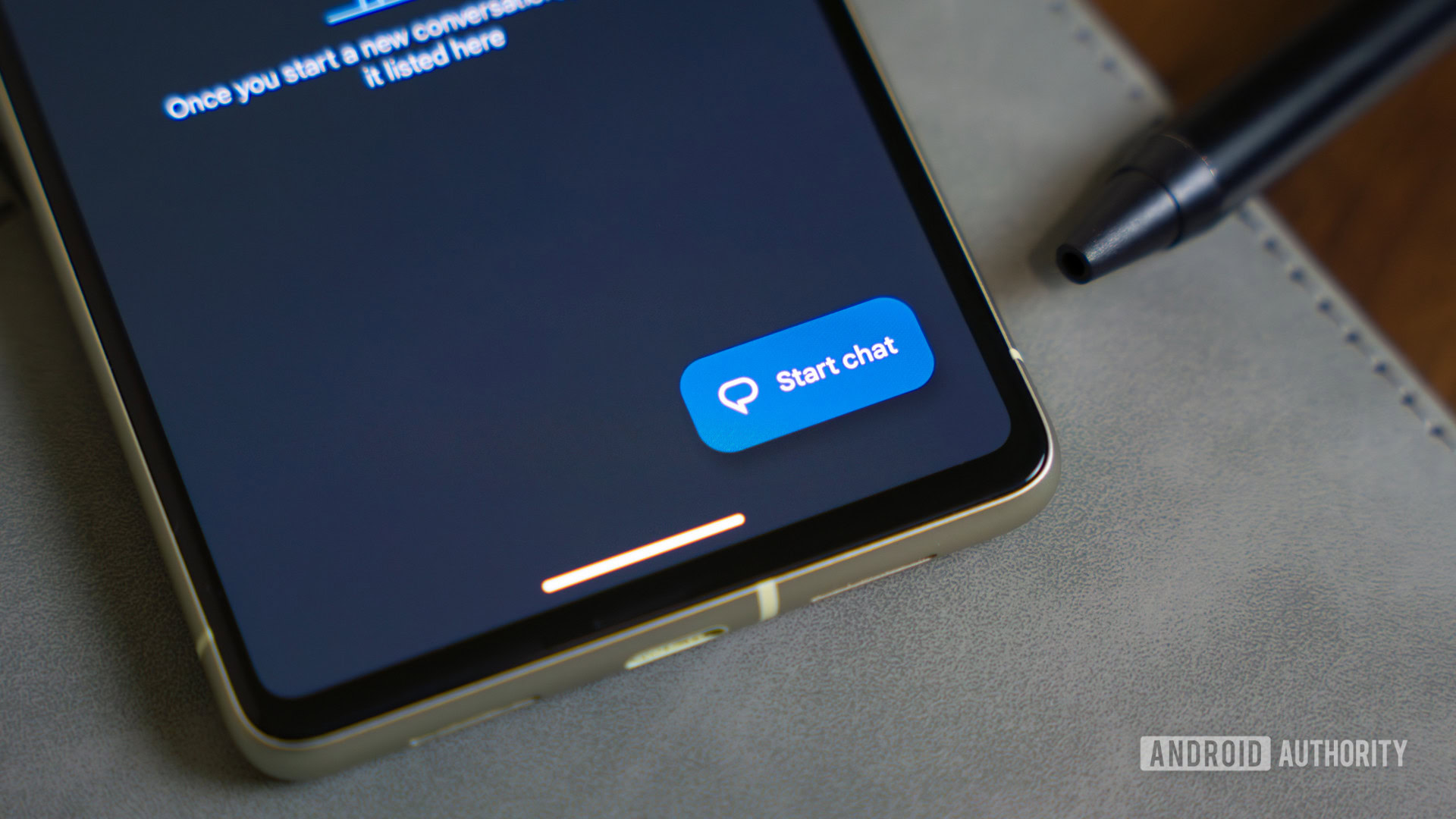
Edgar Cervantes / Android Authority
Well, it’s official — Samsung Messages is dead. Alright, not really, but it’s no longer the default messaging platform on Samsung’s own Galaxy devices, which feels pretty close to a death sentence. After years as the go-to for Samsung devices, both premium and affordable, it’s being replaced by Google Messages across the board. Sure, Samsung Messages will still exist, but you’ll have to head to the Galaxy Store to get it, which might not sit well when there’s another messaging app right in front of you.
As a longtime Pixel fan and user who switches phones often, I welcome the change. One of the first things I do on any Samsung phone during setup is switch to Google Messages for a consistent experience across devices, and now I won’t have to. However, I know that Samsung Messages has its strengths, and it’s loaded with clever features that One UI users love so much.
Before you accept the change and fire up Google Messages, here are a few things you’ll lose by leaving Samsung Messages.
Will you switch from Samsung Messages to Google Messages?
0 votes
Say no to image compression
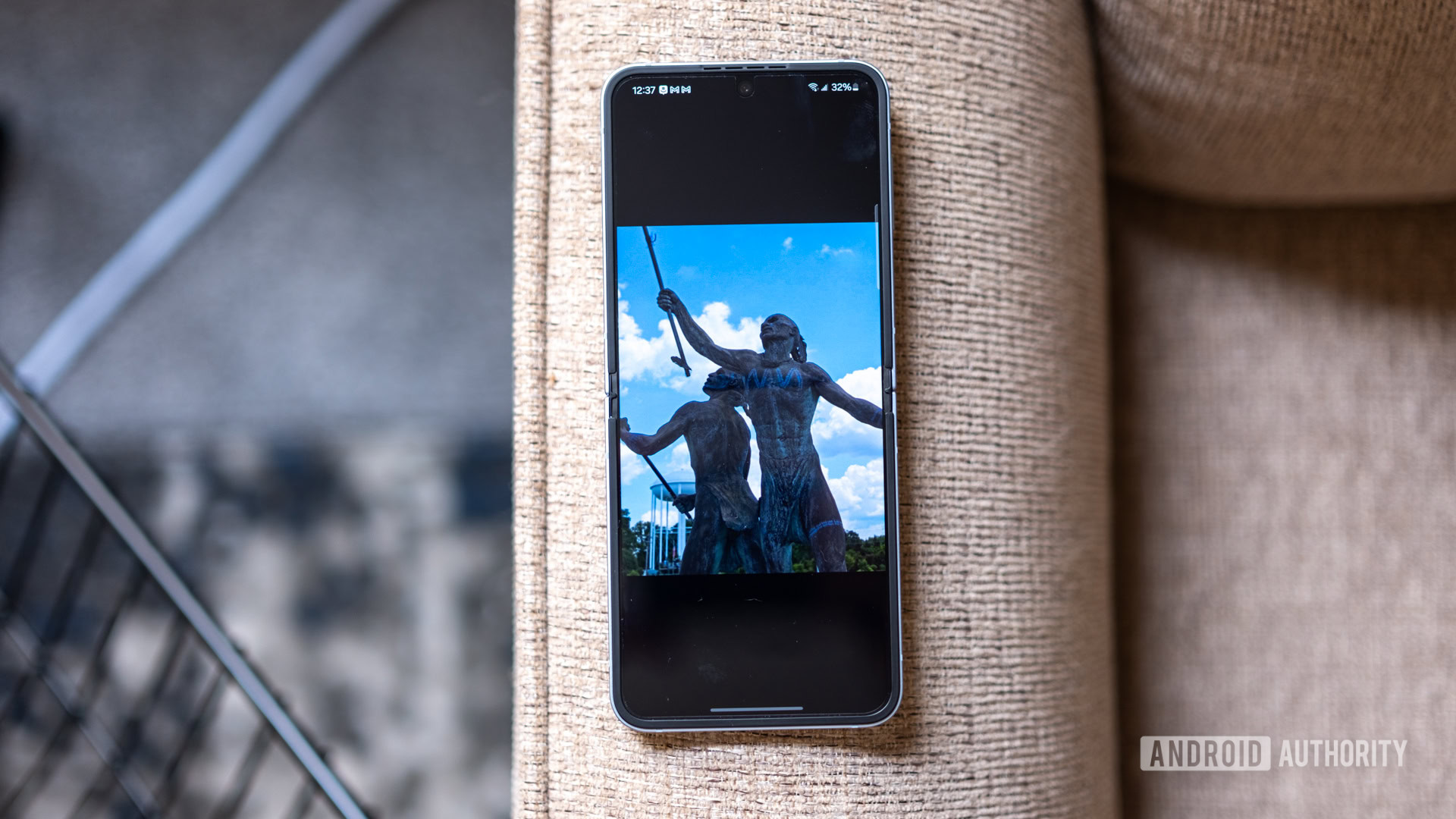
Ryan Haines / Android Authority
Unfortunately, image compression isn’t just an Android-to-iOS problem — Google Messages does it, too. To everyone. Despite its claims that RCS is better than SMS for easy photo and video sharing, Google currently has a firm cap on the size of files you can send. At the same time that it’s telling Apple to “get the message,” Google is limiting those very same messages to images no more than 2,048 pixels tall — on a good day. If you use the Send Photos Faster option (which is active by default), Google Messages will compress your shot even further, squeezing it to 1,600 pixels and dropping even more detail.
Now, yes, Google does this to conserve data and help you save on your storage space, but it feels like a bit of a bait and switch. After all, most people pay for unlimited data plans, meaning that they can handle sending a few extra megabytes back and forth, especially when it means better photos. Using RCS requires the internet anyway, so increased data usage shouldn’t have Google wringing its hands over the bump in demand. Thankfully, we discovered that an upcoming update to Google Messages should expand file sharing, but it seems like Google is playing catch-up.
Google wants everyone to get the message while it keeps compressing your photos.
Samsung Messages, on the other hand, lets you send photos and videos in several different sizes. You can choose between Original, High, Medium, and Low quality for stills — with an option to remember your choice — and Samsung will also ask if you want to resize videos that are sharper than 480p before you send them. The choice only takes a second but adds much more flexibility when sharing large files with family and friends.
Samsung’s search feature is better
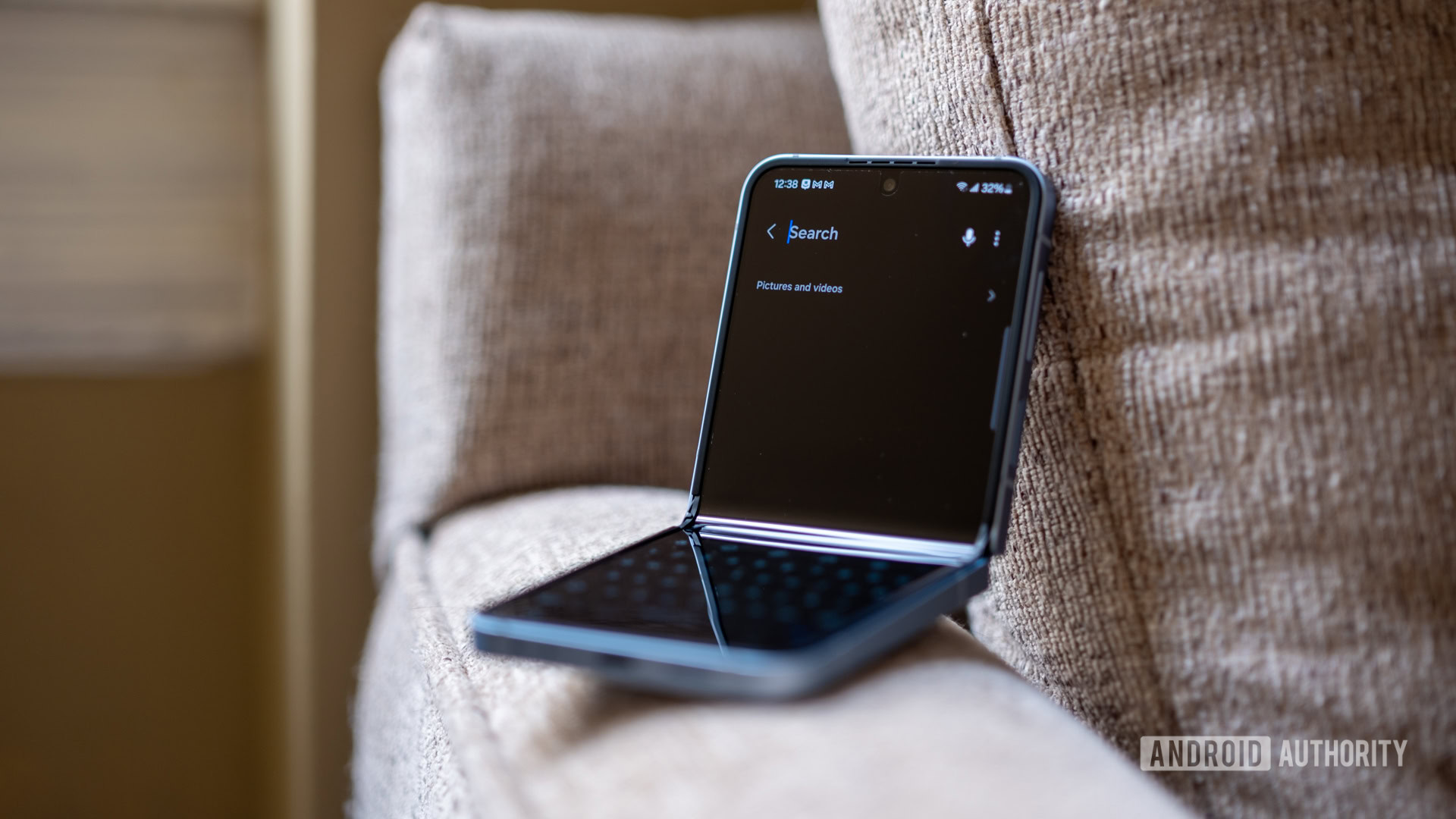
Ryan Haines / Android Authority
Also, despite Google being the worldwide search giant, tracking down individual messages is easier in Samsung’s app. Well, both platforms have search buttons that are well within reach, but the actual results that Samsung provides are far more helpful. Whereas Google only shows you parts of the message within each different chat, Samsung brings up the entire message to give you more context.
Of course, providing the entire message means that you won’t see as many search results right away in Samsung Messages — that’s just the way it is. However, it’s much easier to figure out whether or not you found the right message when you can see it in its entirety rather than just a short blurb. I know I’ve searched for event information in Google Messages only to scroll up or down while trying to figure out which instance of “Baltimore” or “Street” was the right one. You don’t realize how prevalent “Street” is until you live in a major city.
With Samsung Messages, I would have seen the address, the time of the event, and whether or not I needed to bring something with me. This one is a matter of opinion, but I think Google could learn from Samsung’s approach to showcasing search results.
One-handed and wonderful
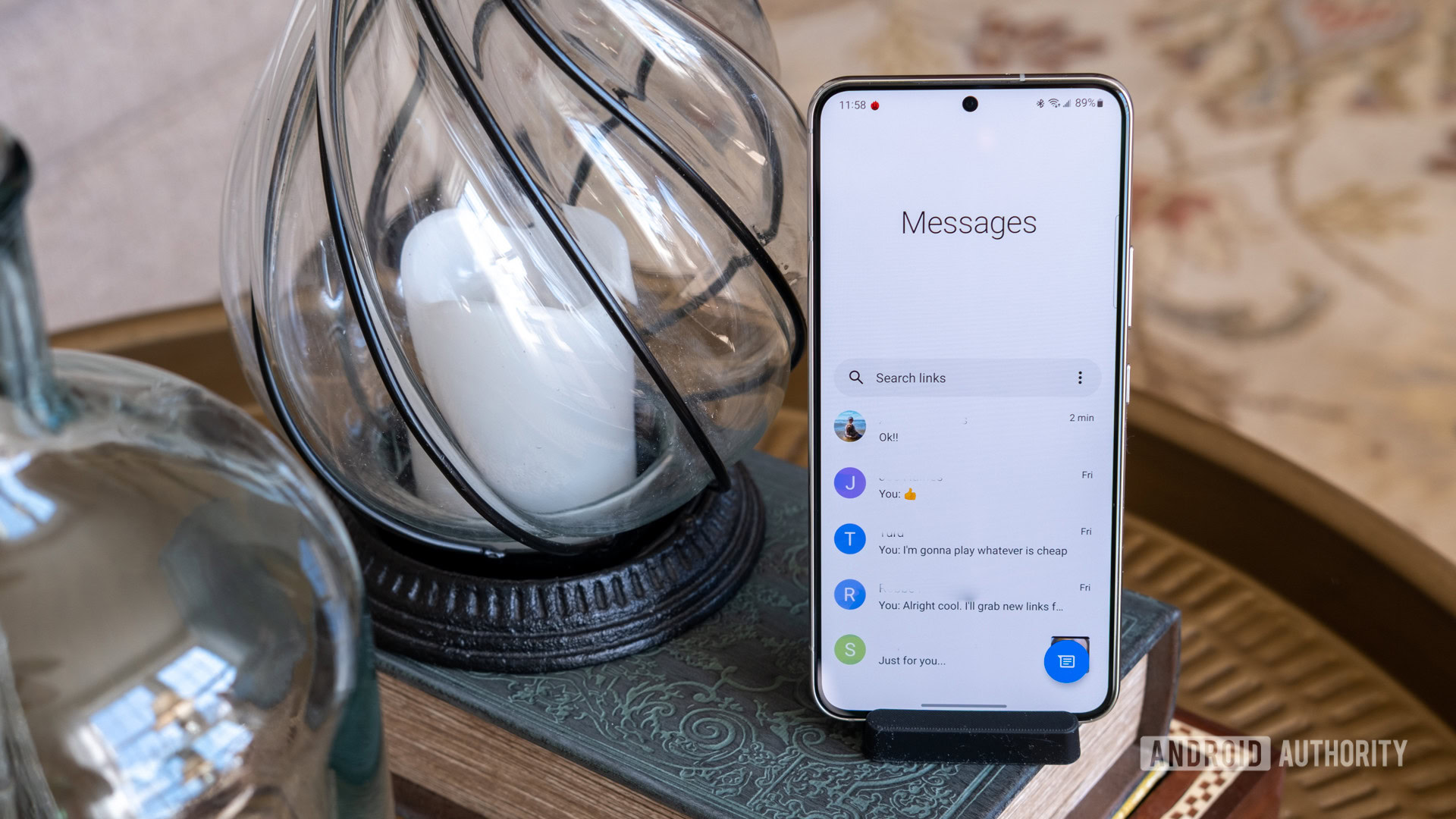
Ryan Haines / Android Authority
Alright, so just about every phone these days has a one-handed use option, but Samsung was once again an early adopter. It acknowledged how big phone displays were getting when it launched One UI back on the Galaxy S10 series and adopted app interfaces that started halfway down the screen. Sure, it meant there was some dead space at the top of most in-house apps, but it also meant that you could reach across a curved AMOLED panel with just one hand.
Granted, Google has somewhat copied Samsung’s approach to tall displays, but I think Samsung still does it better. I’ve been using both Google Messages and Samsung Messages on the Galaxy Z Flip 6 — one of the first phones to officially make the switch — and the difference of a few millimeters goes a long way. In Samsung Messages, your first chat appears right at the display crease, just about perfectly positioned for your thumb. Google Messages, on the other hand, pushes your chat right above the crease, forcing you (or at least me with small hands) to do a bit of stretching. Both apps also put their search buttons and settings menus above the chats, making them tough for anyone to reach.
Everyone does one-handed mode, Samsung just does it best.
Then again, who needs one-handed mode when you can load up either messaging platform on Samsung’s Flex Window and do everything without ever opening your phone? Just don’t get me started on Good Lock.
No two conversations are alike
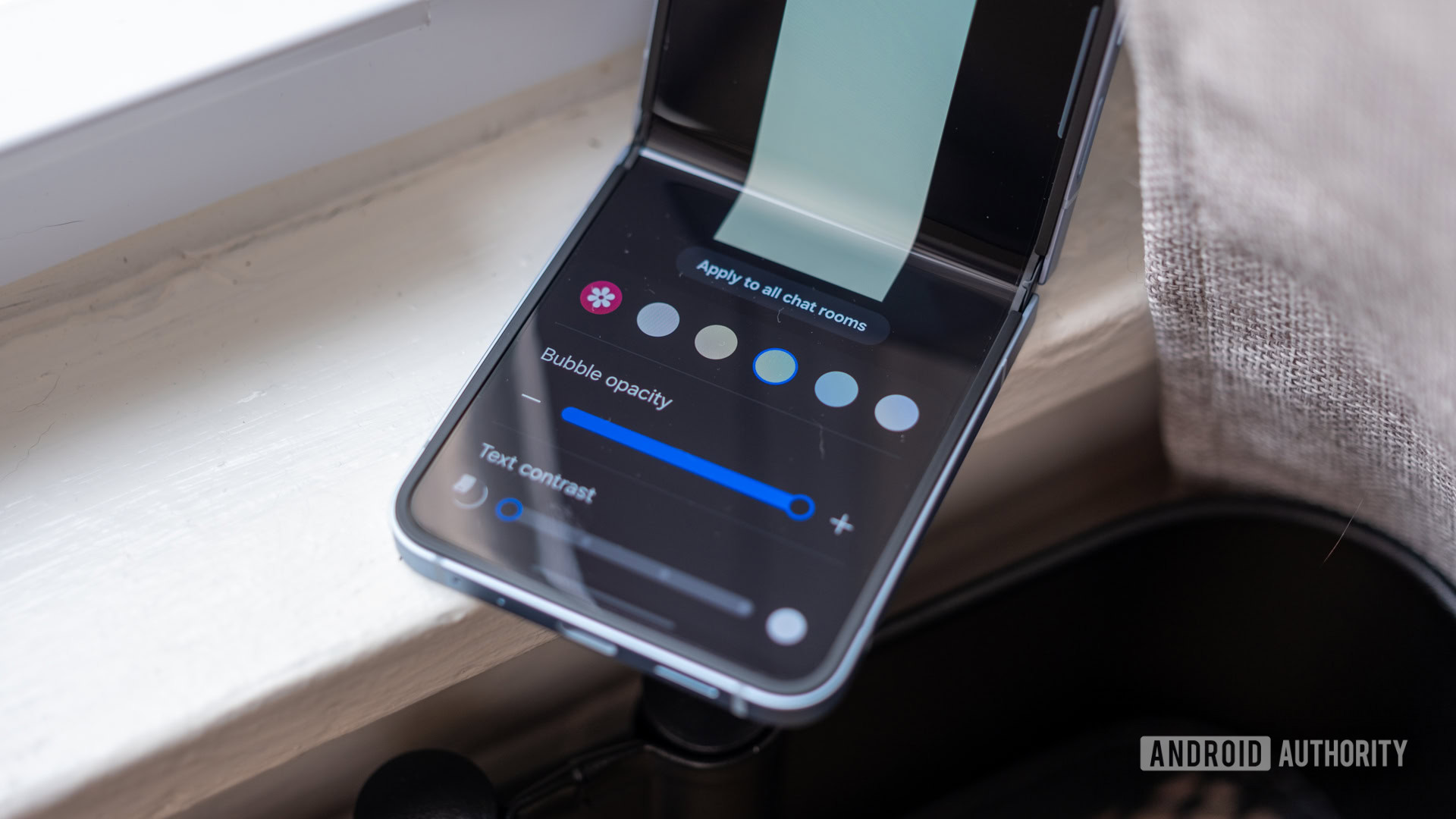
Ryan Haines / Android Authority
Google is usually the king of making your Android phone feel uniquely yours, but we can’t forget how many customization options Samsung has created over the years. In fact, it’s probably the most granular Android skin out there — especially when it comes to messaging.
Sure, Google offers a few different themes to choose from — Light, Dark, or System Default — but Samsung lets you customize every single chat in Samsung Messages. Whether you want to change the opacity of your chat bubble, the background color of your conversation, or even the contrast of the text itself, Samsung is happy to let your mind run wild. It’s as easy as opening a conversation and tapping Customize Chat Room, too. If you’re really feeling wild, you can also set an image as the background of your chat — just keep in mind that with great power comes great responsibility.
Then again, this might be one of those Samsung Messages features that’s fun for a few minutes until you realize how hard it is to read white text on a green background and go right back to the default color profile.
Saved by the recycling bin
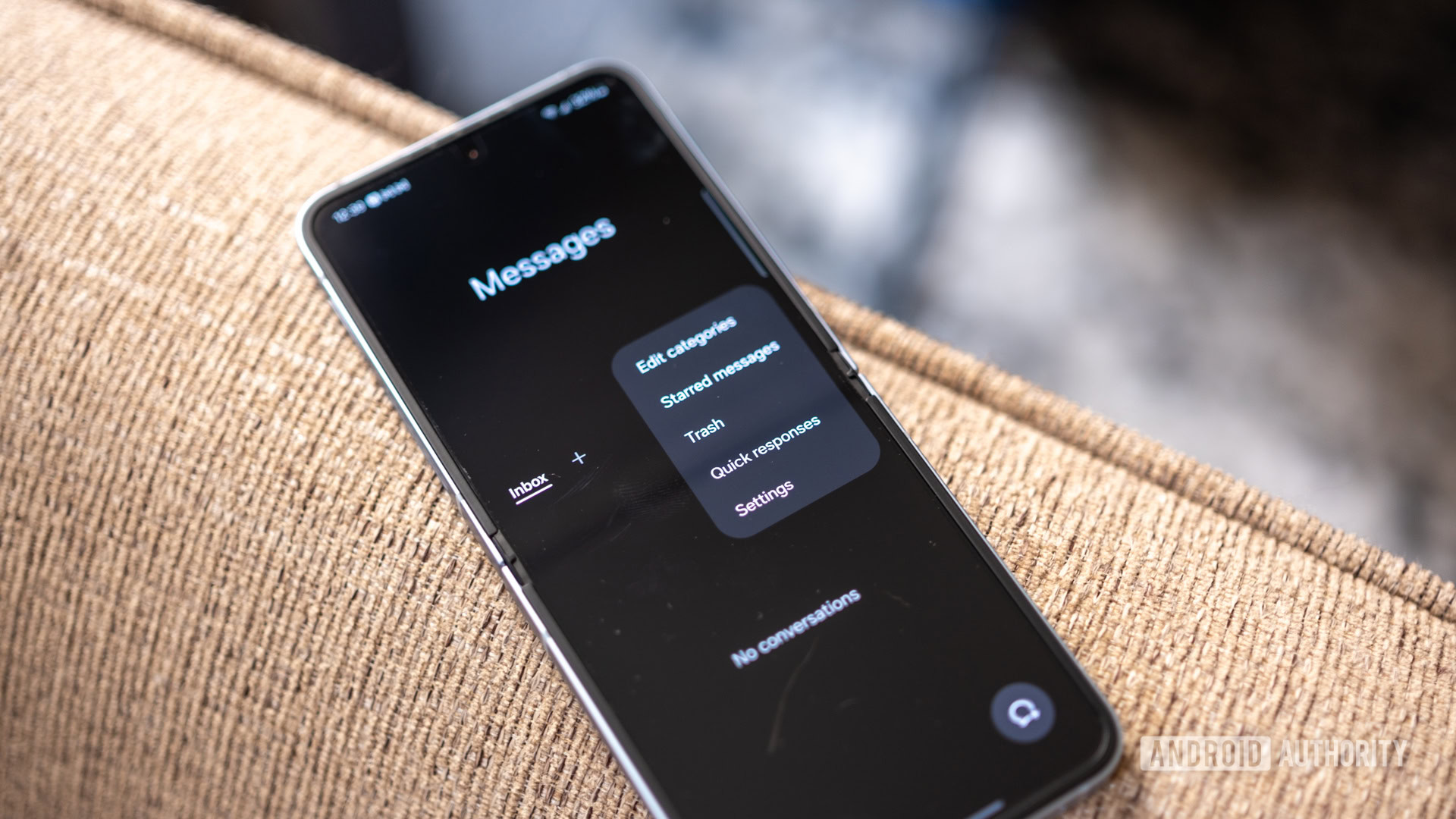
Ryan Haines / Android Authority
I don’t know about anyone else, but I’ve been bit by the inbox clean-out more than once, so I’ve saved the second-best feature for last. Every so often, I’ll decide that I have too many conversations floating around in Google Messages and purge older conversations that I haven’t used in a while. Then, without fail, I’ll need something from one of those now-deleted chats. Maybe it’s a recipe, or maybe it’s a reminder of a good hiking trail, but there’s always something.
With Google Messages, I’m toast — well, unless I decide to archive a chat rather than delete it. However, I’ve never been a big archiving guy since it feels like I’m just pushing the problem from one page to another. With Samsung Messages, however, deleted chats sit in the trash for a month before they actually shuffle off to the great data bin in the sky. It’s more than enough time for me to remember that I deleted something, retrieve it, and then start the 30-day countdown over again.
Personally, I’d prefer to call Samsung’s approach the recycling bin instead of the trash since it gives me a better chance of reusing my messages, but beggars can’t be choosers. Just keep in mind that if you empty your trash early or the 30 days pass, your conversations are gone for good.
There’s a silver lining to the switch
Robert Triggs / Android Authority
Ultimately, I’m not sure why I’m surprised that Samsung’s messaging app has so many clever features. One UI has always been about customization and going the extra mile, and I’ve always ignored it in favor of the smooth, simple Google Messages. In hindsight, I probably could have given both platforms their fair shake before settling on one, but here we are. And, despite it all, I’m glad to see Samsung Messages go. Not for the loss of features but for the step forward into an RCS future.
You see, that’s why Samsung is making this change — to bring more of the Android ecosystem into one united messaging experience with the same RCS standard (not to mention the slow but steady Apple adoption of RCS). After all, it’s easier for Google to go back and copy some of Samsung’s tricks than it is for Samsung to completely revamp its approach to RCS as it currently exists. Right now, as far as I can tell, Samsung Messages uses a carrier-dependent profile for RCS, which means it might not be identical from Verizon to T-Mobile to a long list of MVNOs. Google Messages, on the other hand, uses the same profile across all devices and carriers, making it much easier to ensure the same experience for everyone. Adding Samsung phones to the family just makes sense.
If Samsung Messages has to die for a universal RCS experience to live, so be it.
In addition, there are some Google Messages-specific features that I’ll be glad to see as defaults on Galaxy devices. For example, Google is better at sorting messages and splitting personal conversations into one tab while keeping promotions, transactions, and one-time passwords in their own sections, like a miniature Gmail inbox. I also prefer Google Assistant’s context-aware responses to those that Samsung offers, like the ability to create an entry in your Google Calendar if a chat mentions a birthday or an event.
Even Google’s desktop continuity comes out on top, with a browser version of Google Messages just a QR code away. You can pair your history to a MacBook or a Windows laptop and keep everything contained within Chrome, Safari, or whatever else you choose to use. If you want to do the same with a Samsung Messages chat, you’ll have to pair your phone via DeX, which is hardly as simple or as universal.
At the end of the day, I think it’s good that Samsung is joining the Google Messages family. It will make communication easier and more secure for a larger section of Android users. However, I believe that the best solution will come when both Google and Samsung combine the best of their respective messaging apps to create one final cross-Android platform that rivals what iPhone users get out of Messages.

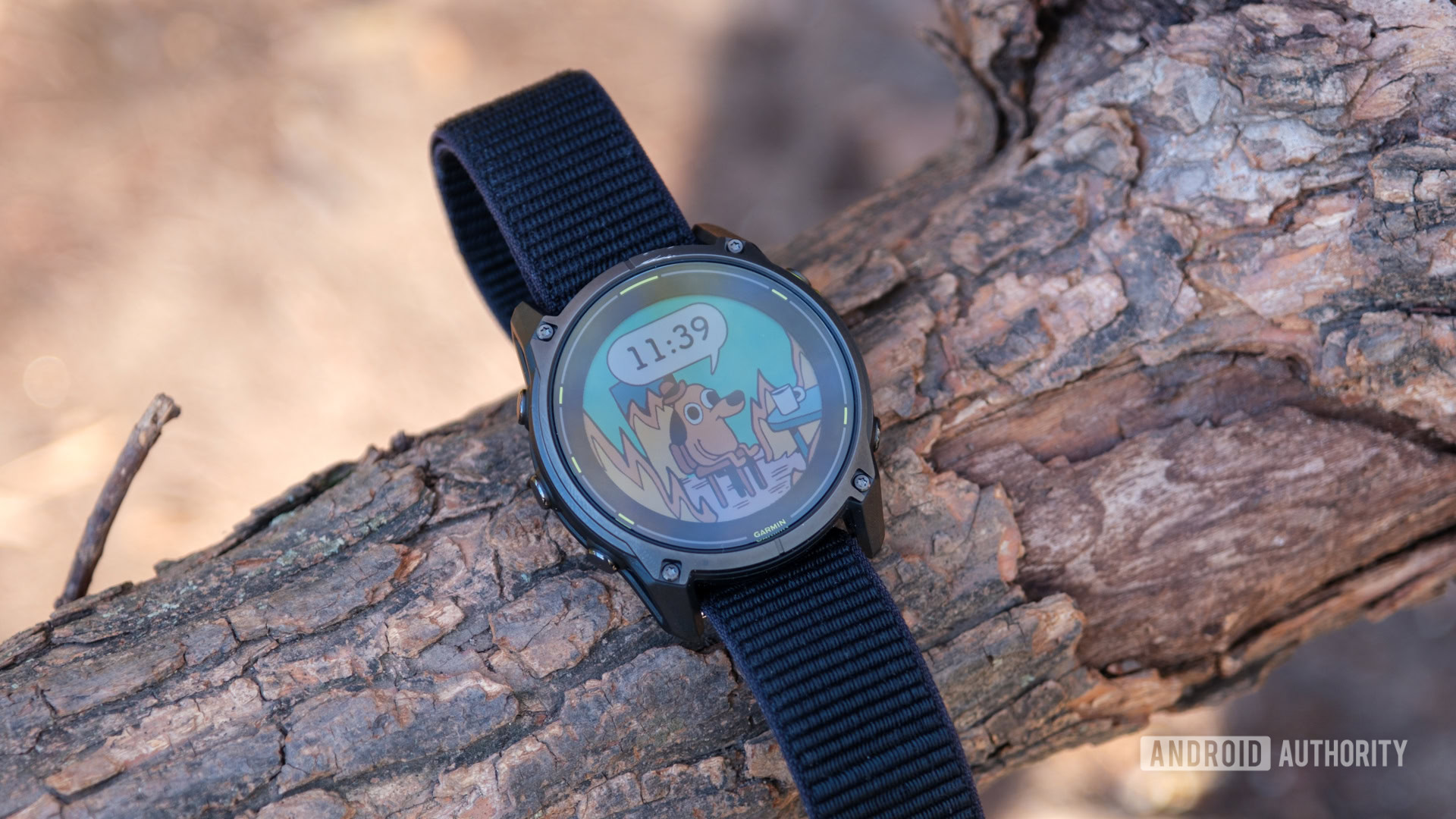
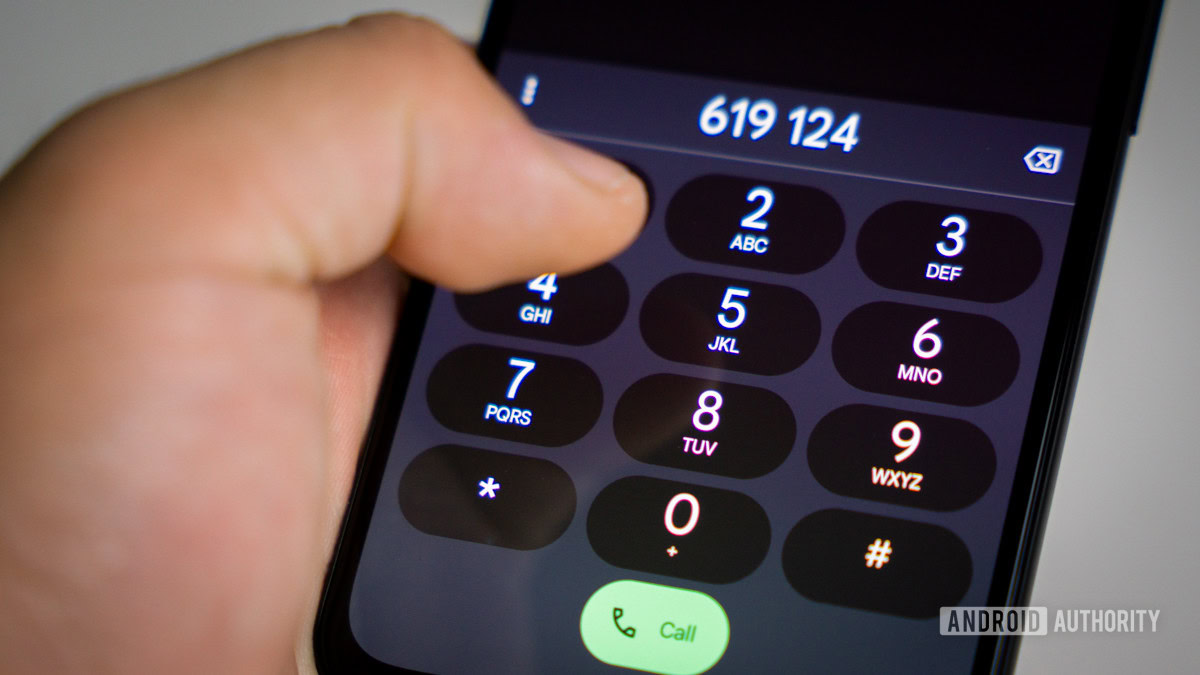




 English (US) ·
English (US) ·